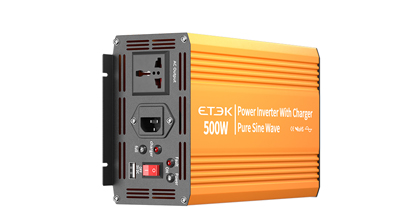Introduction
In the modern world of electronics and power management, power inverters play a crucial role. Among them, the pure sine wave power inverter stands out for its unique characteristics and wide range of applications. This article aims to provide a comprehensive understanding of what pure sine wave power inverters are, how they work, and their significance in various scenarios.

What is a Pure Sine Wave Power Inverter?
A pure sine wave power inverter is a device that converts direct current (DC) power, typically from a battery or a DC power source, into alternating current (AC) power with a waveform that closely resembles the pure sine wave of the utility grid.
B. Waveform Comparison
Unlike modified sine wave inverters that produce a stepped approximation of the sine wave, a pure sine wave inverter generates a smooth and continuous waveform. This is important because many electrical appliances are designed to operate optimally with a pure sine wave input.
How Does it Work?
B. Voltage and Frequency Regulation
It also has the ability to regulate the output voltage and frequency to match the standard values required by different electrical devices. For example, in most regions, the AC power has a frequency of 50 or 60 Hz and a specific voltage range, and the pure sine wave inverter can adjust its output accordingly.
Advantages of Pure Sine Wave Power Inverters
A. Compatibility
They are highly compatible with a wide variety of sensitive electronic devices. This includes computers, laptops, televisions, and audio equipment. These devices often have power supplies that are designed to work with a pure sine wave, and using a pure sine wave inverter helps prevent issues such as overheating, reduced performance, and premature failure.
Medical equipment like CPAP machines and certain laboratory instruments also function more reliably with pure sine wave power, ensuring accurate readings and proper operation.
B. Power Quality
The pure sine wave output provides a clean and stable power source. This means less electrical noise and interference, which is beneficial for both the connected devices and the overall electrical environment.
It helps to reduce harmonic distortion, which can otherwise cause problems such as flickering lights and damage to electrical components over time.
C. Efficiency
In many cases, pure sine wave inverters offer better efficiency compared to other types of inverters. This is because the smooth waveform allows for more efficient transfer of power, resulting in less energy loss during the conversion process.
They can operate at a higher power factor, which means that they can deliver more useful power to the load, reducing the overall energy consumption.
Applications of Pure Sine Wave Power Inverters
A. Residential Use
In homes, they are used for backup power during power outages. A pure sine wave inverter connected to a battery bank can power essential appliances such as refrigerators, lights, and fans, providing a seamless transition during an outage.
They are also popular for powering recreational vehicles (RVs) and boats. This allows travelers to use their normal household appliances while on the road or at sea, enhancing their comfort and convenience.
B. Commercial and Industrial Applications
In offices, they can be used to provide uninterrupted power to critical computer systems and servers, preventing data loss and downtime.
In industrial settings, they are used for powering sensitive manufacturing equipment and control systems, ensuring the quality and consistency of production processes.
GET A QUOTE